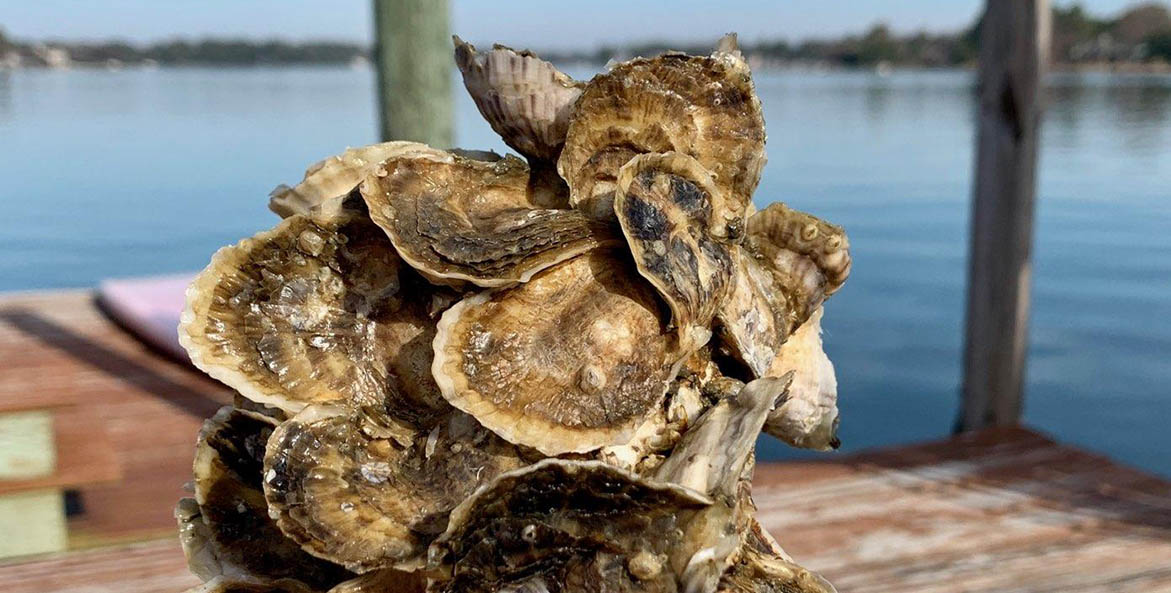This month, fishery managers are seeking input on a plan to help revive striped bass amid troubling signs that the fish, once a conservation success story, are vulnerable once again. Striped bass and other iconic fish and shellfish are emblematic of both the Bay's growing resilience and its continuing fragility. There are true bright spots. Oysters are thriving in Virginia's Lafayette River, once heavily polluted. Sturgeon are back and even reproducing in places scientists once thought them extinct. There are also true challenges—for sturgeon, oysters, striped bass, and many others—and much work left to do. For example, implementing an innovative plan to reduce pollution in Pennsylvania streams could help embattled brook trout return. Large-scale restoration of oyster reefs, an important habitat for many fish, is also key, and it's a job CBF's unique restoration vessel Patricia Campbell has been doing for 20 years. Oysters are also getting a boost from oyster farmers, who shared with us what their day-to-day operations look like. Finally, funding for key Bay restoration programs is making progress at the federal level, as well as in Virginia—you can find out about those stories and more in our monthly news roundup.
VIDEO: Lafayette Oysters Thrive
Norfolk's Lafayette River was once polluted, but this big-city river is now better known for successful oyster restoration. CBF, the Elizabeth River Project, and partners built 32 acres of oyster reef, completing the effort in 2018 when the Lafayette became the first Virginia tributary to meet goals for oyster habitat. As this video shows, it's thriving.
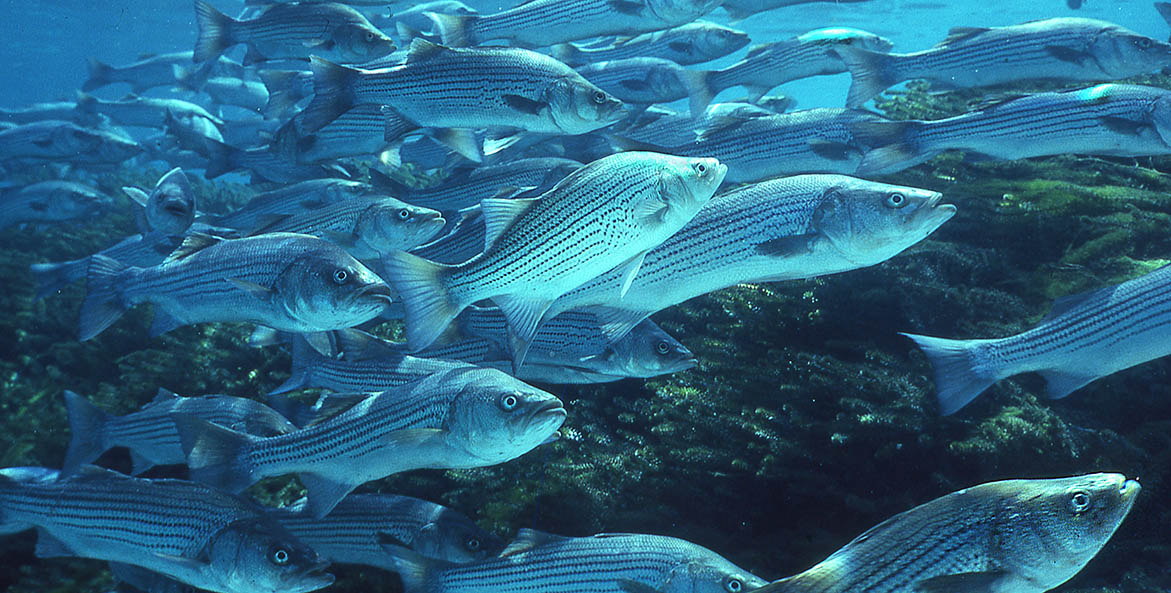
Schooling striped bass, also known as rockfish.
iStock/stammphoto
Saving the Striper
Conservation brought striped bass back from the brink. Known locally as rockfish or stripers, these big, beloved fish are now vulnerable once again. Fishery managers are currently updating plans to protect them, and you can help—managers are seeking public input at hearings throughout March, and you can join us in speaking up via our action alert.
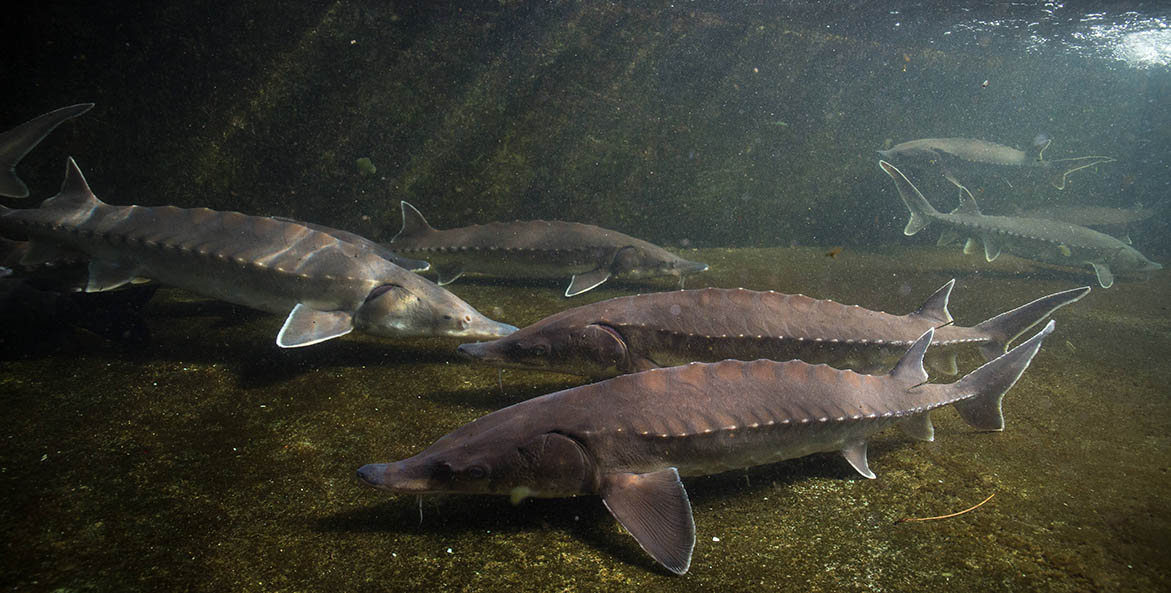
Atlantic sturgeon (Acipenser oxyrhynchus) require a clean bottom substrate, free of sedimentation, for the successful development of their eggs.
Ryan Hagerty/USFWS
Sturgeon Resurgence
Atlantic sturgeon are making a comeback in the Chesapeake Bay watershed. Scientists, who once thought the prehistoric fish were locally extinct, are now finding sturgeon in Virginia's James River as well as Marshyhope Creek and the Nanticoke River on Maryland's Eastern Shore. But their recovery is fragile—low oxygen levels, sedimentation, and non-native predators remain threats.
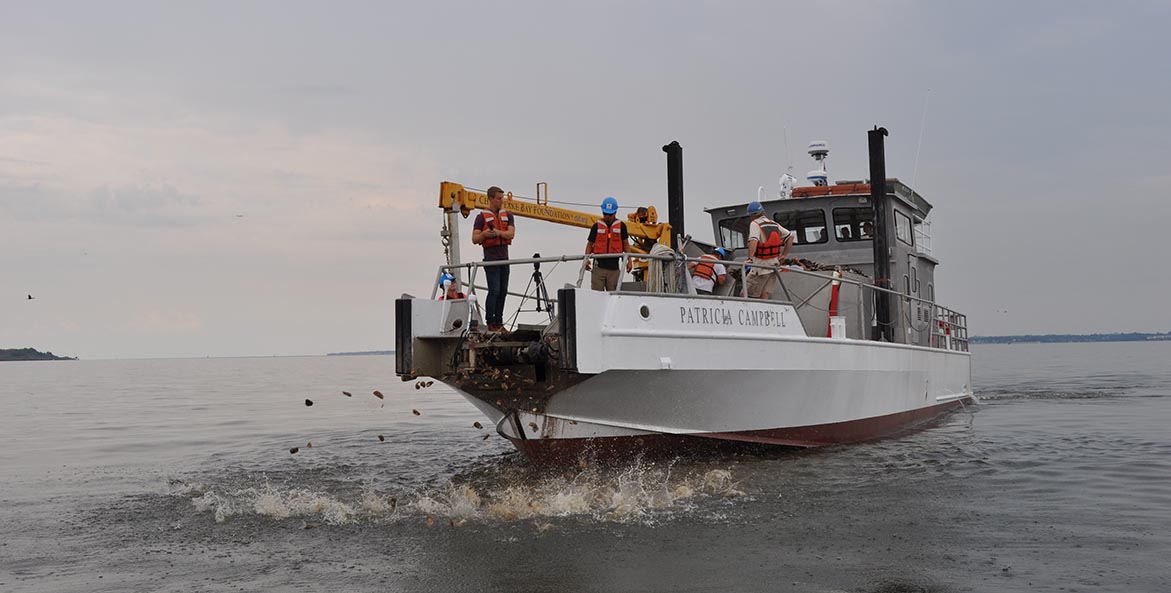
The Patricia Campbell plants oysters at the Campbell Memorial Reef outside of Baltimore Harbor on July 31, 2019.
A.J. Metcalf/CBF Staff
VIDEO: 20 Years of Oysters
The Patricia Campbell was a marvel of engineering when it was built in 2002, designed specifically to accelerate CBF's oyster restoration efforts. Twenty years later, it is still a unique and innovative vessel. So far, it has added more than 336 million oysters to the Chesapeake Bay—and is still going strong.
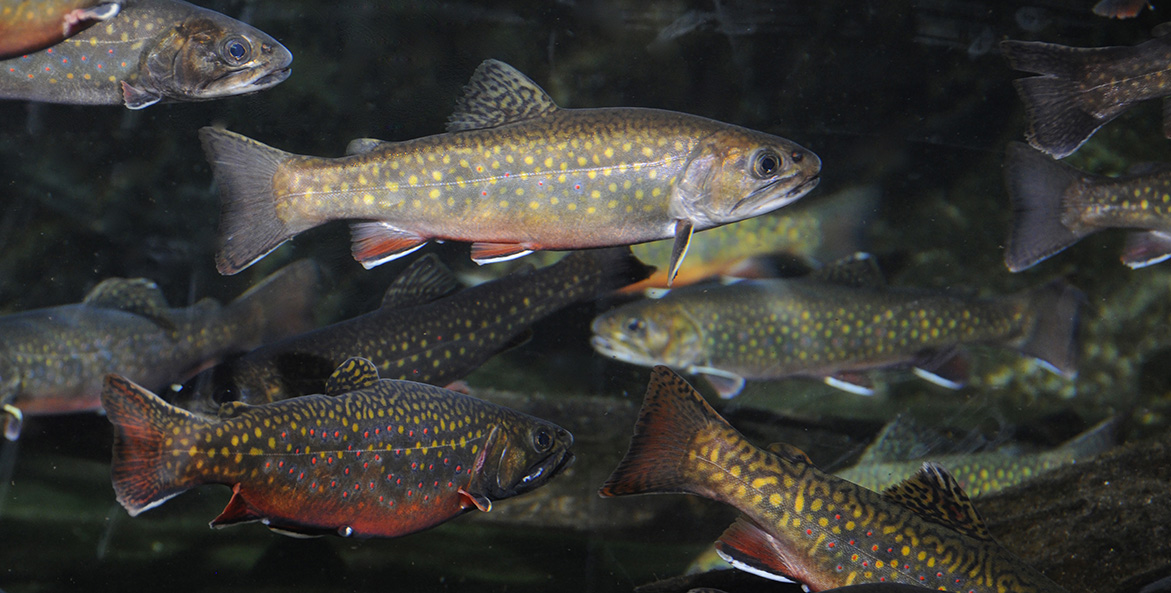
Pennsylvania's official state fish, the native brook trout (Salvelinus fontinalis), thrives in cool, clean water.
The Wild Center
Forest Fish
Brook trout, the only trout native to the Bay watershed, once lived in Appalachian streams from Georgia to Maine. Forest loss, rising temperatures, and pollution have pushed them out of many of those streams. But it's still possible to bring them back—as CBF's Brian Gish hopes to do in one of Pennsylvania's most beleaguered watersheds.
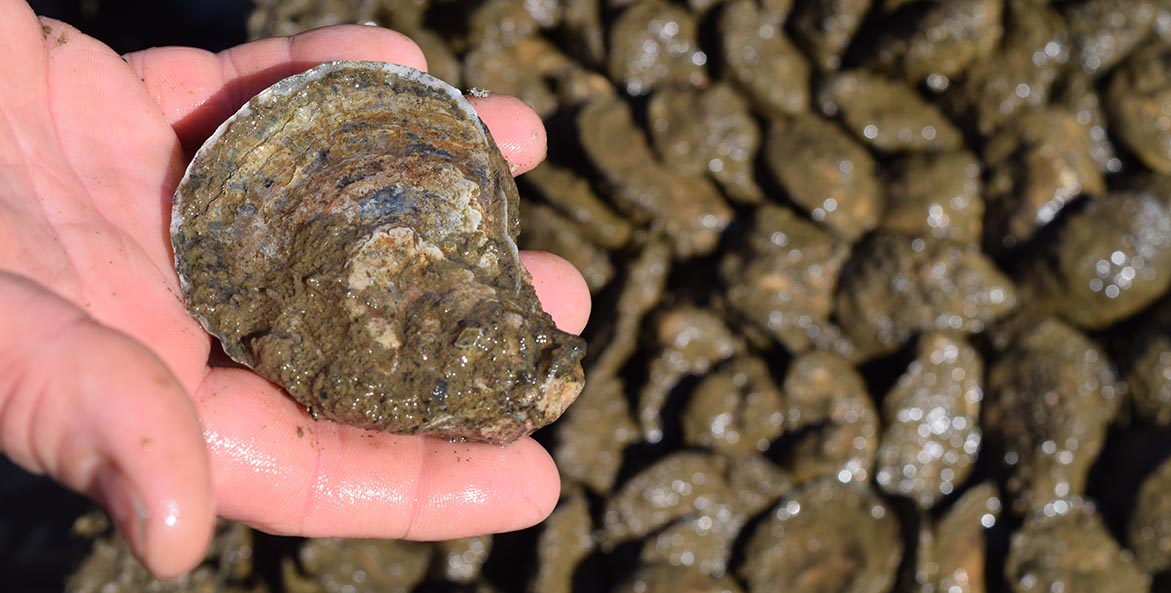
An example of a market size oyster ready for distribution.
Isabella DeFranceco/CBF Staff
Livin' the Oyster Life
What's it like to live and work on an oyster farm? "Every day is different," says Tal Petty, owner of Hollywood Oyster Company in Hollywood, Maryland. Located along the Patuxent River, a tributary of the Chesapeake Bay, the company has been growing oysters since 2010. From tumbling to sorting, they walk us through their day-to-day.
VIDEO: Around the Bay in 60 Seconds
In this month's news roundup: Congress passes legislation with funding for essential programs for saving the Bay; states can once again adopt stricter vehicle emissions limits; a Maryland report reveals declining water quality-related inspections and enforcement actions; Virginia makes progress toward strong clean-water budgets; and more.
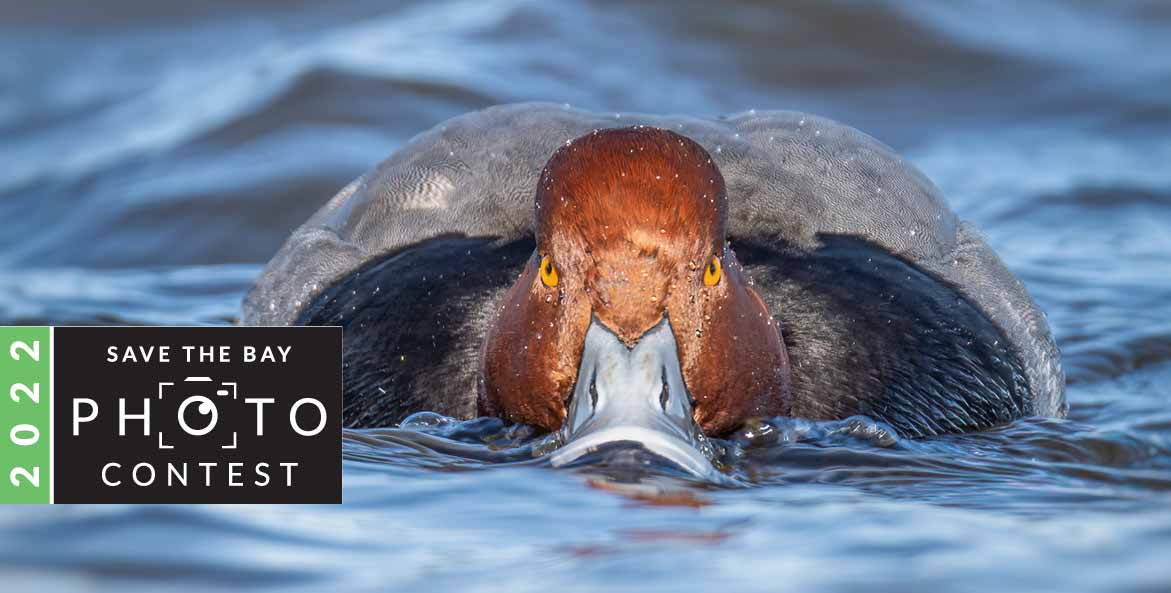
Heather Orkis
What You Can Do
- Our Save the Bay Photo Contest is now open! Review the official rules and guidelines and submit your favorite Chesapeake photos for a chance to win cash prizes.
- Save the Date. Plant a tree, help out on the farm, join us for Clean the Bay Day, and more.
- It's not too late to sign up for our Clagett Farm CSA! Get your share of fresh, local, and sustainably grown produce all summer long.
- How much do you know about the Bay's favorite bivalve? Take our Oyster Quiz!
- Want to stay up-to-date on late breaking Bay news and advocacy alerts? Sign up for our SMS Action Network!
- Save the Oyster, Save the Bay. Kick off oyster restoration season with a gift today and help us raise enough to plant 3.5 MILLION oysters!
- Like what you see? Sign up for our monthly Save the Bay e-newsletter.

